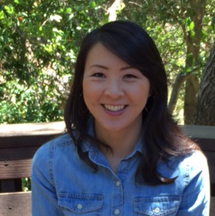 How Parents Can Support Student Success
How Parents Can Support Student Success
This post is a parallel commentary from the parent perspective on Mary Ann Burke’s October 19, 2021 post “How You Can Support Student Success” from her series Student Engagement Assessment: Strategies to Empower All Learners.
Students Must Feel Safe and Secure
One of the basic foundational steps parents could take to foster success is to make sure your child has a designated spot for their studies. When children return home from school, this specific spot signifies a consistent, regular rhythm in their school day. They know that their learning and studies continue in this spot because it is reserved especially for them. When all their learning supplies are in one, accessible location, this spot becomes a reliable source for students to meet the challenge of learning something new, applying knowledge, and accomplishing their dreams. Students feel safe knowing that they can complete assignments and projects in this one spot.
Likewise, students feel secure knowing that a trusted adult has made their education and learning a priority. This adult role-model could show interest in assignments and projects, attend school events with the child, or ask the student if they need help on school studies. In addition to all things related to learning, students also need reassurance that a grown-up has invested time and energy to advocate for their mental health and well-being. A parent or trusted adult could also ask the student about social activities at school, friends they hang around, or for older children, how they feel about external influences like the news, social media, or politics. Asking for a young person’s opinion and respecting their viewpoints is a sure way to help students feel safe and secure.
Students Must Learn How to Ask Teachers to Clarify Learning Intentions
Communication in a classroom must be a two-way street. In order for students to have ownership of their learning, they must also learn how to ask for clarification from the teacher. In moments of frustration, it is easy for students to throw up their hands and say, “I don’t get it!” Parents can be instrumental in guiding students towards articulating and communicating what their learning needs might be from the teacher.
The first step you can take is to ask your child for the learning context. Ask your child “Can you explain what you are learning?” If your child is able to give you general background information about the class content, this is a good start!
Next, ask your child if they understand the learning task. It might sound something like “Do you know what the instructions are asking you to do?” or “What do you think you are supposed to do with the information the teacher gave you?” If your child is able to rephrase the learning task in their own words, they have a good idea what they are supposed to do. If they have difficulty understanding the directions, or they don’t understand what the outcome of the project is supposed to look like, help your child to articulate their question to ask the teacher. If your child is in one of the primary elementary grade levels, you may need to help compose an email to the teacher. As much as it is possible, encourage your child to ask the teacher directly for clarification, whether in class the next day, or by sending an email. This will inform the teacher whether or not they have made their learning intentions clear. With parent or adult support, this is a very valuable lesson for your child to take ownership of their learning!
Learning Assessments Must Inform and Guide Students
Within the range of classroom learning and performance assessments, teachers may give authentic assessments like projects or portfolios for students to demonstrate their learning. Inasmuch as these give students to flexibility to design how they will be assessed, parents must also frame the “traditional” pen and paper test as an informative assessment.
All too often, students receive a chapter review guide, take the chapter test, receive the score, and then quickly file away the test and disregard any learning opportunities from taking the test. Recently, my seventh-grade daughter took a math unit test. They did a lot to practice at home and review in class. Alas, she did not do well on the test! The teacher took the opportunity to use the assessment to inform and guide students to extend learning. He took the time to review the test in class and then gave a couple of options for students who wanted to learn from the assessment; they could either submit a “redo” of the missed test questions or retake the entire test. Either of these options would give them a chance to improve their grade. Additionally, the teacher also offered office hours during lunch and after school. As a parent, encourage your child to learn from their mistakes and take advantage of every opportunity to improve.
Ask the teacher what their policy is about using assessments to inform and guide students. Whether it be authentic assessments or the traditional test, communicate with the teacher that your ultimate goal for your child is that they be able to learn and improve with each learning opportunity.
Students Can Define How They Learn Best
Even as teachers are designing a variety of learning activities and assessments for students, parents can also encourage their children to take initiative to discover a wide spectrum of topics as they desire on the home front. Children may be interested in learning hands-on, kinesthetic activities like automotive mechanics, learning and applying a physical technique or skill in sports, or maybe even playing a musical instrument. Still yet, other children love challenging themselves to conquer math and engineering tasks, tackle outdoor survival skills, or immerse themselves into film production and editing. The possibilities are endless. As we nurture our children’s passions and infuse that with the foundations of learning at school, we support student success!

Discovering the joy of teaching while in high school, Jaime pursued her B.A. in English at Santa Clara University. She also received a teaching credential and a M.A. in Education Administration from Santa Clara University. Jaime taught English Language Arts at Rancho Middle School, motivating and inspiring young people to become effective communicators and contributors in their community. From being a Middle School English Language Arts/English Language Development teacher to becoming a stay-at home mom, Jaime is an education consultant who presents literacy workshops. Her workshops focus on a combination of her ten years of teaching expertise with tried-and-true experiences that she uses with her own children. Jaime is also a Teacher Consultant with the San Jose Area Writing Project. Jaime’s mission is to share effective reading and writing strategies with families to encourage literacy.

